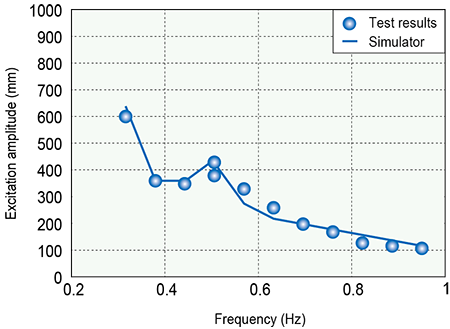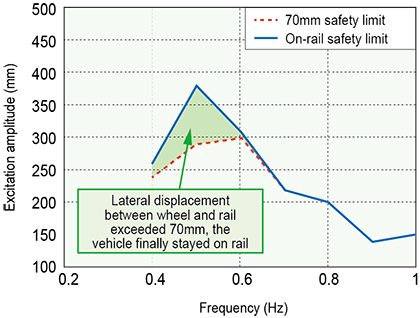29. Investigation of vehicle behavior during earthquake with focus on on-rail safety limit
To date, analysis of vehicle behavior during an earthquake has traditionally employed a safety limit of 70 mm relative lateral displacement between wheel and rail (hereinafter referred to as “70mm safety limit”). We know little about vehicle behavior outside of the 70 mm safety limit.
We developed a simulator for evaluating vehicle dynamic behavior during an earthquake outside of the 70mm safety limit for conventional simulations (see Figure 1). We conducted excitation tests on a 1/10 scale model vehicle of a conventional line train using the large-scale shaking table at the Railway Technical Research Institute. Figure 2 shows the excitation amplitude at which derailment occurs for various excitation frequencies. The graph shows the predictions from our vehicle dynamics simulator to be highly consistent with the test results of the model vehicle.
We also performed a simulation of a conventional line train to determine the limit point beyond the 70mm safety limit at which the vehicle finally cannot stay on the rails anymore. Figure 3 compares this limit point (we call this new criterion “on-rail safety limit”) with the 70mm safety limit. In the 0.4 - 0.6 Hz range, the on-rail safety limit exists at excitation amplitudes of up to 100 mm beyond the 70mm safety limit.
Our findings can be used to inform in-depth studies of vehicle running safety during an earthquake, as well as improved vehicle designs that offer better resistance to derailment.



